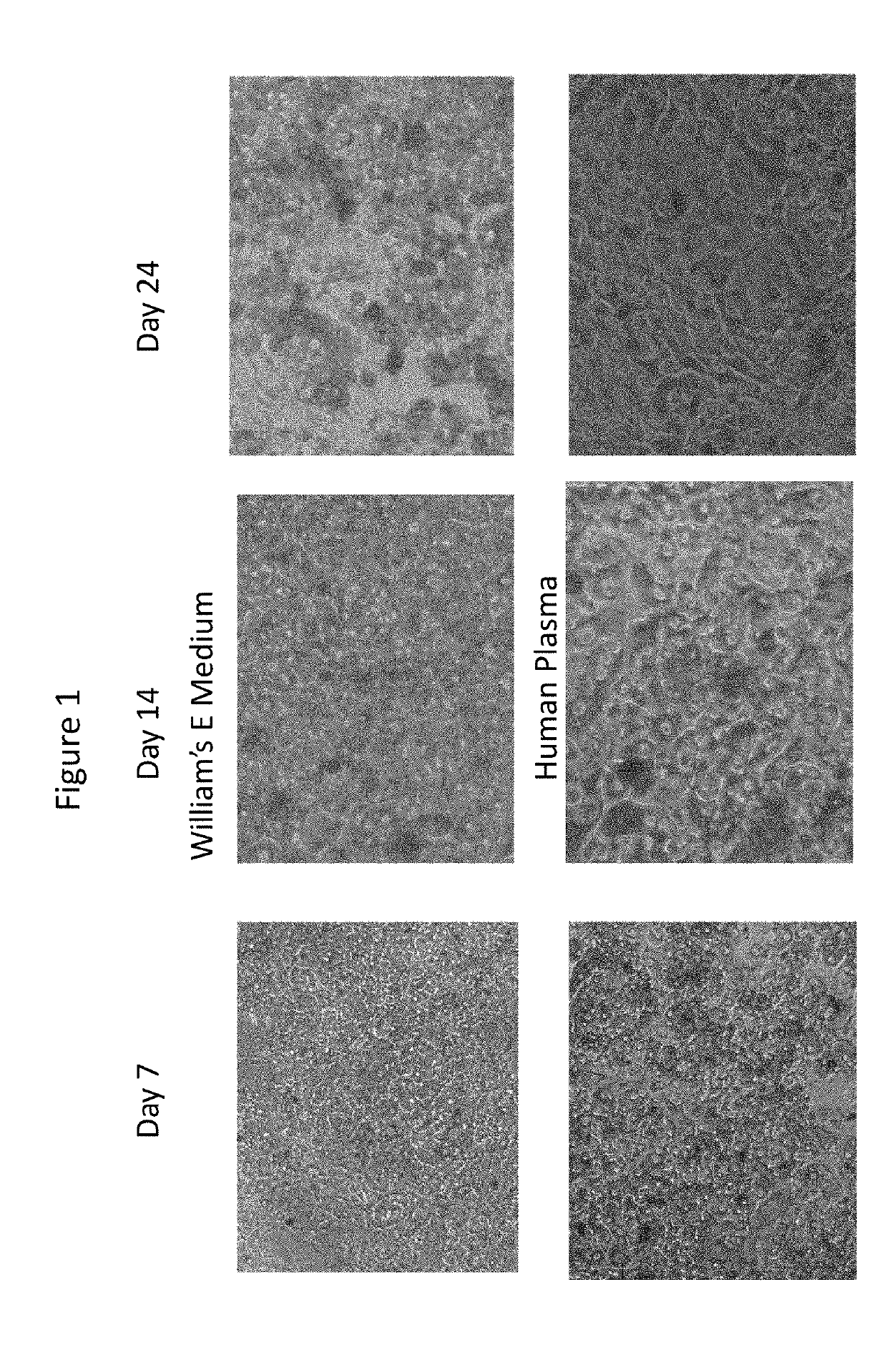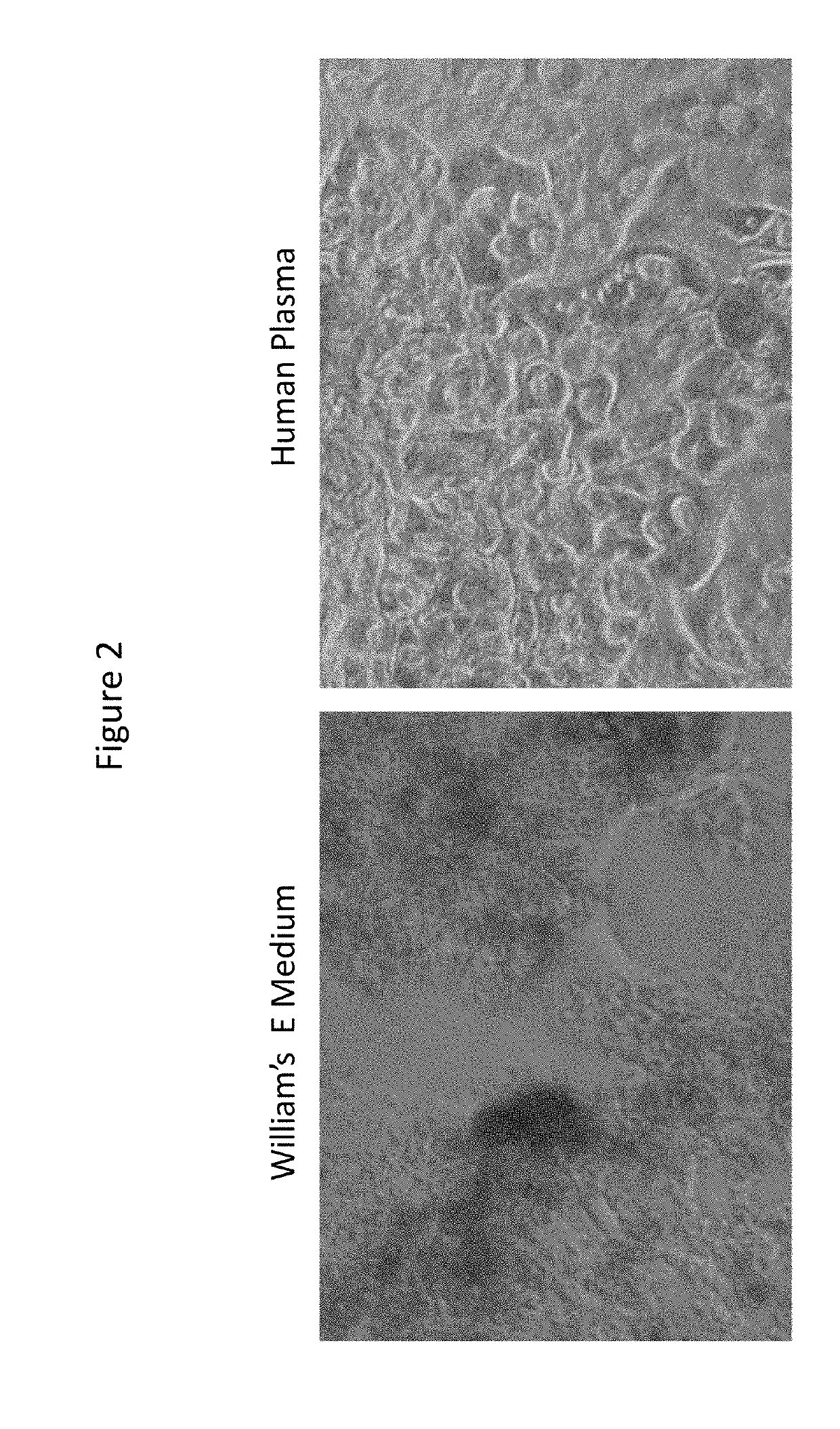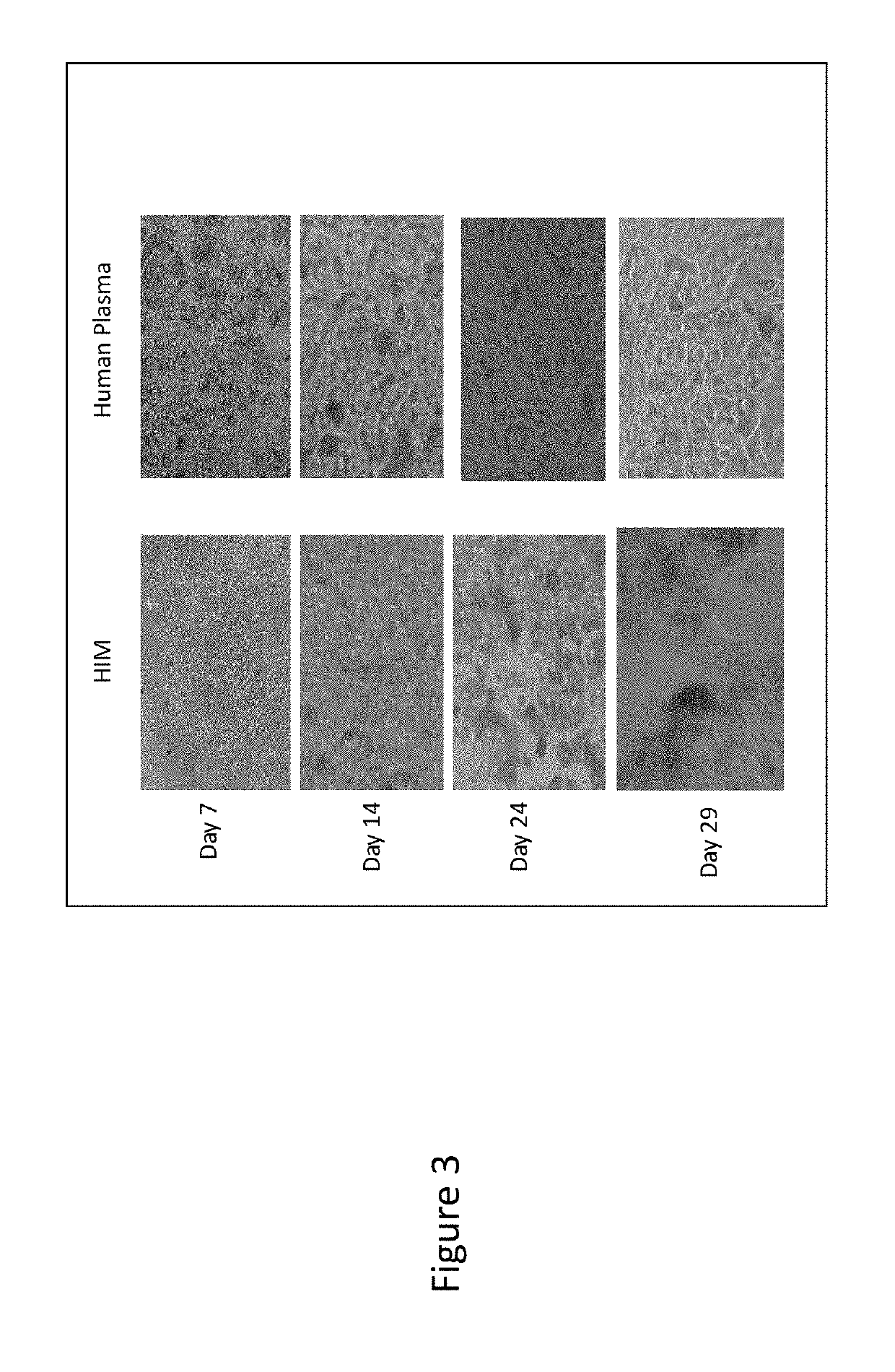Novel cell culture method, cell culture system and uses thereof
- Summary
- Abstract
- Description
- Claims
- Application Information
AI Technical Summary
Benefits of technology
Problems solved by technology
Method used
Image
Examples
example 1
of Human Hepatocytes in Whole (100%) Human Plasma
[0079]In the human body, all cells are nourished by plasma. Human plasma should therefore be the most appropriate medium for the culturing of human cells.
[0080]Previously cryopreserved 100% confluent plateable human hepatocytes (HH1053 / 57 / 62; three donors) were cultured in 100% human plasma (minimally modified human plasma pooled from five donors) and William's E medium (Thermo Fisher), which is a reduced serum-supplemented medium for long-term cell cultures of adult rat liver epithelial cells but can also be used for culturing human hepatocytes. The hepatocytes were cultured in a 96 well plates with the culture medium changed every Monday, Wednesday and Friday for a total of 29 days.
[0081]Cell morphology of the cultured hepatocytes was evaluated on day 7, 14, 24, and 29 wherein the human hepatocytes cultured in the William's E medium started to disintegrate at day 14 and continued through the end of the experiment at day 29. In contr...
example 2
e P450 Induction
[0083]Hepatocytes from human donors (previously cryopreserved) were plated in both 100% human plasma (minimally modified human plasma medium pooled from donors; HPZ-A) and protein free hepatocyte media (HIM) for a total duration of 29 days. The hepatocytes were plated in 96-well collagen-coated tissue culture plates using Universal Cryopreservation Plating Medium (UCPM). After 4 hours of attachment, the medium was changed to HPZ-A and HIM containing 0.25 mg / mL Matrigel. Medium was changed to HPZ-A without Matrigel on the next day and every 2-3 days afterward for a culture duration of 29 days.
[0084]FIG. 3 shows the morphology of human hepatocytes cultured in human plasma medium as compared to HIM on day 7, 14, 24 and 29. The human hepatocytes cultured in human plasma medium remained viable with normal epithelial cell morphology at day 29. Hence, a 100% human plasma medium (HPZ-A) can be used successfully for culturing human hepatocytes for a prolonged period of time o...
example 3
e P450 3A4 Induction
[0089]CYP3A4 is a member of the cytochrome P450 superfamily of enzymes.
[0090]Hepatocytes from two human donors (previously cryopreserved) were plated and cultured as disclosed in Example 2. For CYP3A4 induction comparisons, lots of human hepatocytes (HH1051 and HH1053) were used. For the hepatocytes cultured in HIM, rifampin (concentration ranged from 1 uM to 20 uM) was added at day 2 after plating for a treatment duration of 3 days and for the hepatocytes cultured in human plasma medium, rifampin (concentration ranged from 10 uM to 200 uM) was added at day 5 after plating for a treatment duration of 3 days. Gene expression by RT-PCR was used to measure induction of CYP3A4 by rifampin.
[0091]FIGS. 6 and 7 show a dose dependent induction of CYP3A4 gene expression by rifampin. At the concentrations evaluated, the maximal fold induction in the hepatocytes cultured in human plasma medium was found to be lower than that observed by the hepatocytes cultured in HIM.
PUM
 Login to View More
Login to View More Abstract
Description
Claims
Application Information
 Login to View More
Login to View More - R&D
- Intellectual Property
- Life Sciences
- Materials
- Tech Scout
- Unparalleled Data Quality
- Higher Quality Content
- 60% Fewer Hallucinations
Browse by: Latest US Patents, China's latest patents, Technical Efficacy Thesaurus, Application Domain, Technology Topic, Popular Technical Reports.
© 2025 PatSnap. All rights reserved.Legal|Privacy policy|Modern Slavery Act Transparency Statement|Sitemap|About US| Contact US: help@patsnap.com



